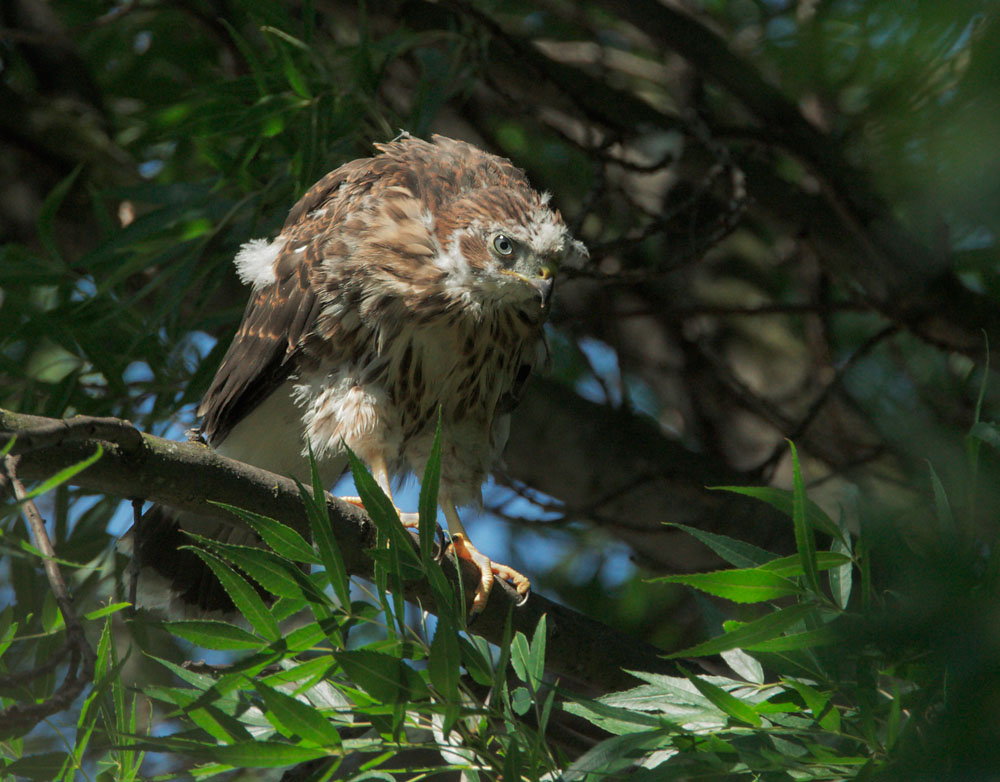Cooper's Hawk, Accipiter cooperii
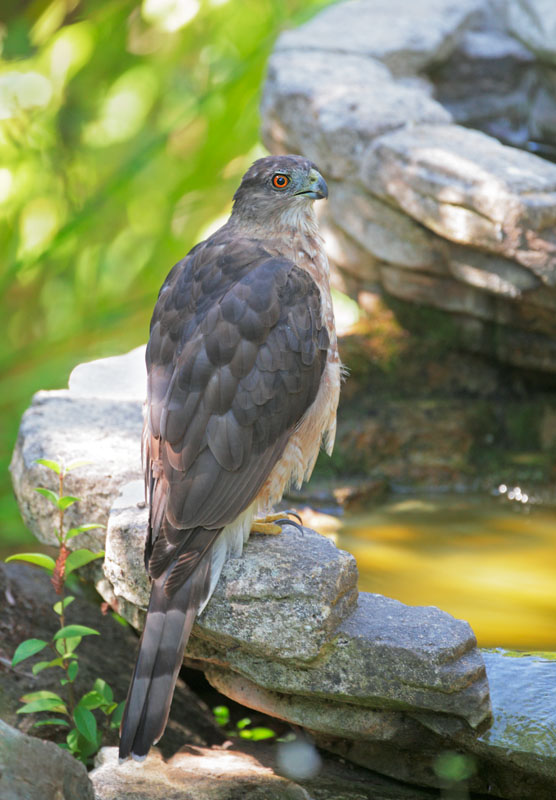
Cooper's Hawks are year-round residents of the Bay Area. They are accipiters,
with long tails and short rounded wings, adapted to pursue their favorite prey,
smaller birds, through wooded areas. They are much more common here than
the similar but smaller Sharp-shinned Hawk. Sharpies winter here but mostly
depart to breed elsewhere; I have few pictures of them, many of Coops.
The two species present a well-known identification challenge, but there are a
number of good distinguishing features. Coops are bigger, but male Coops overlap
in size with female Sharpies. Coops' legs are thicker, roughly pencil-like vs.
toothpick-like in Sharpies. The head is proportionately larger and blocky-shaped
on the Coop, with the eye looking smaller and more forward. The difference in
head size is especially noticeable in flight, with the Coop's head projecting well
forward from the bend in the wing. Another flight difference is the slower flap
speed of the larger Coops. Coops' outermost tail feathers are shorter than the rest,
often producing a rounded look to the tail tip, compared to Sharpies' typically
square tip.
Sexes are similar, but with differing tendencies in adults. The upperpart feathering
is gray, but tending toward blue in males, toward brown in females. The rufous
barring on the underparts of males tends brighter and more red, on females duller
and more brown. The adult iris is reddish, tending more red in males, more orange
or even yellowish in females. Females are notably larger, but size can be difficult
to estimate unless both sexes are seen together.
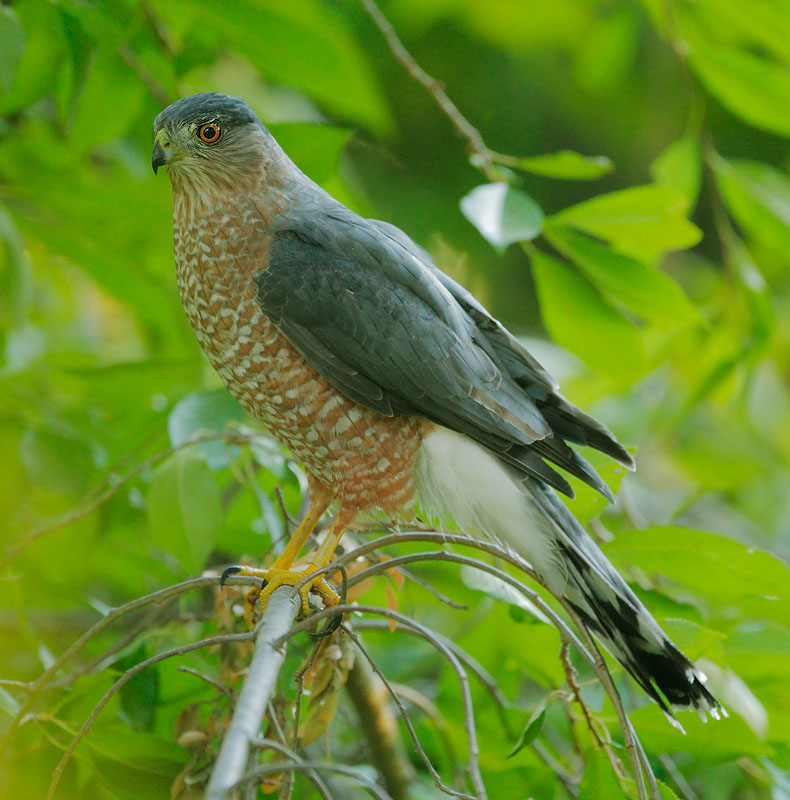
A second year bird almost completely molted to gray adult plumage, but with one brown juvenal secondary
showing. A picture of this same bird a month earlier, still with many juvenal feathers, is further down the page.
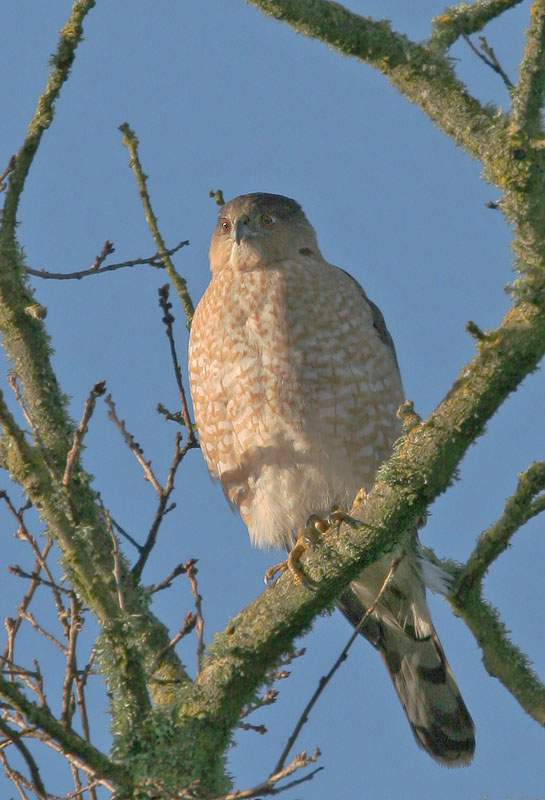
A good view of the Coop's curved tail-tip; the outermost tail feather is shorter
than the inner ones.
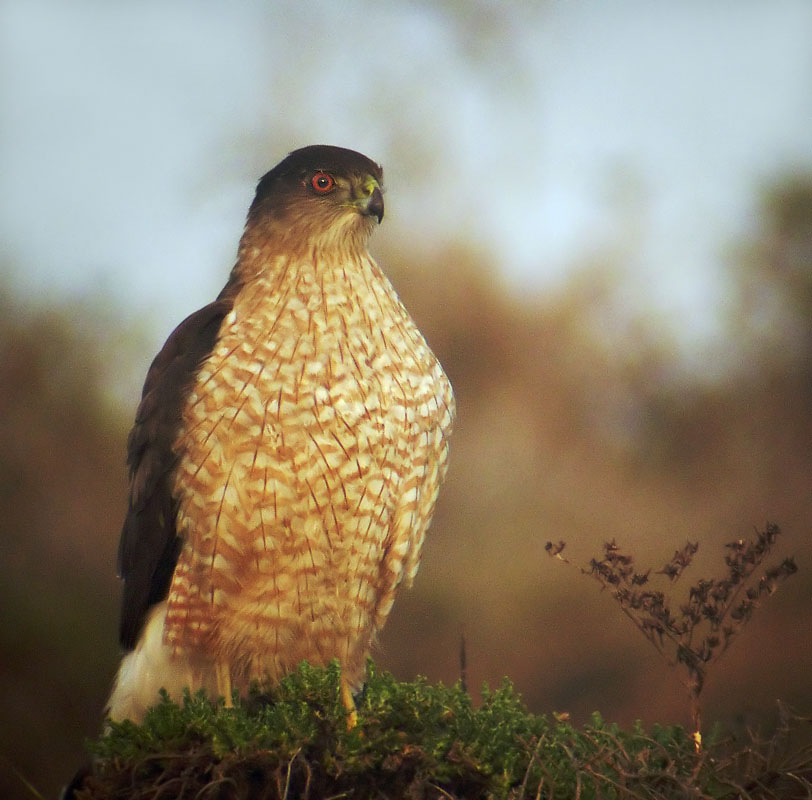
The image above is a digiscope, one of the earliest of my pictures posted on this site.
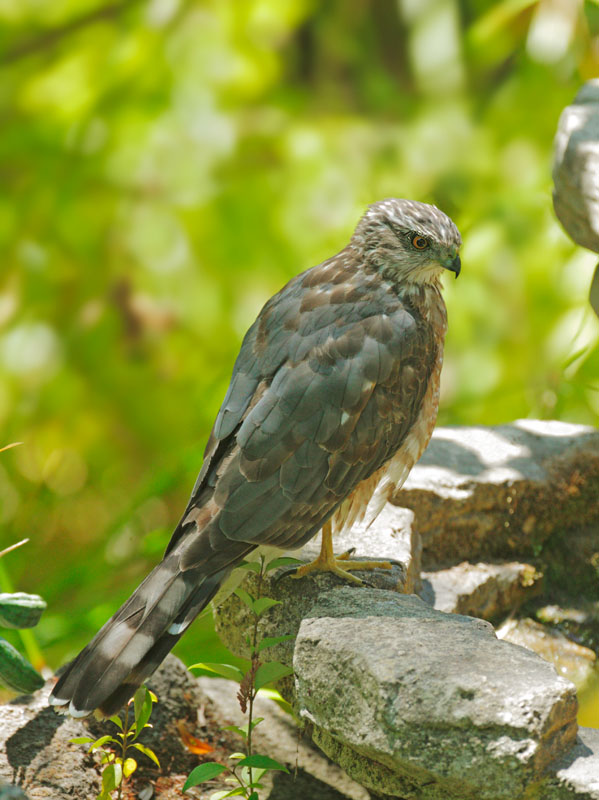
This is the bird shown about a month later in nearly complete adult plumage in the
second image from the top of this page. Here the bird is shown in mid-molt, the head
still with the the juvenal brown-gray striping, the eye an orange hue midway between
the pale yellow of the juvenile and adult red, the back and wing feathers more than
half adult gray but still with a number in juvenal brown. For full juvenal plumage, see
the birds pictured below.
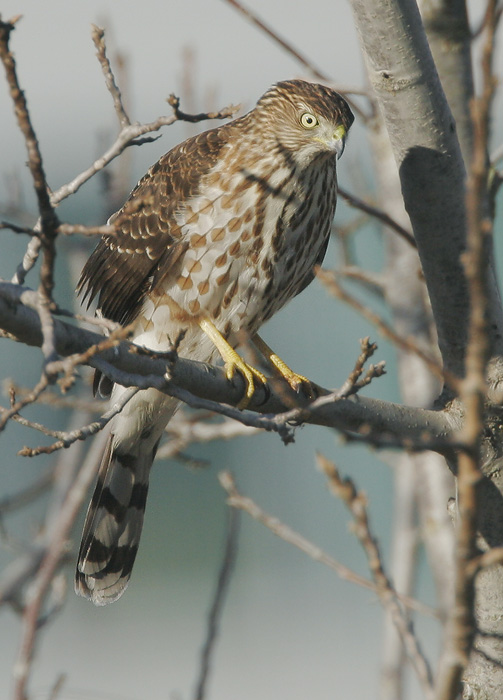
As with most species, I have proportionally more pictures of juvenile
than of adult Coops; birds learn to be more cautious as they get older.
In common with other raptors, Coops hold their juvenal plumage through
their entire first year.
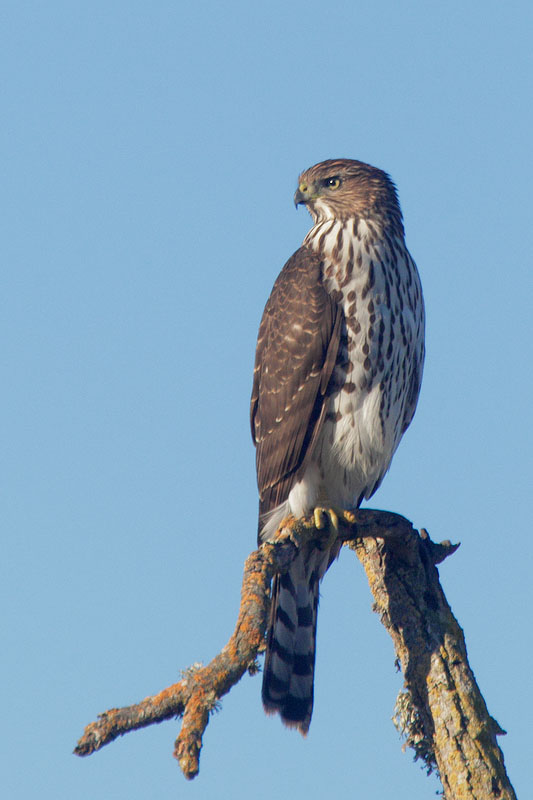
The juvenile's upperpart and head feathers are brown instead of gray, and
the underparts have brown stripes rather than reddish bars. The iris varies
from yellow to amber, where the adult's is orange to deep red.
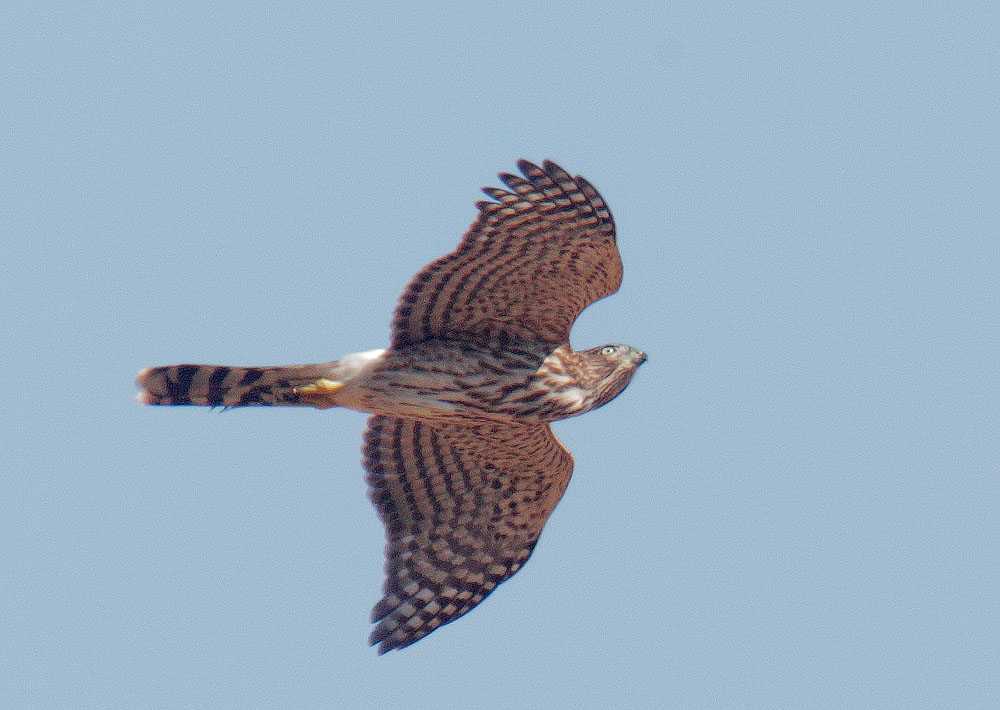
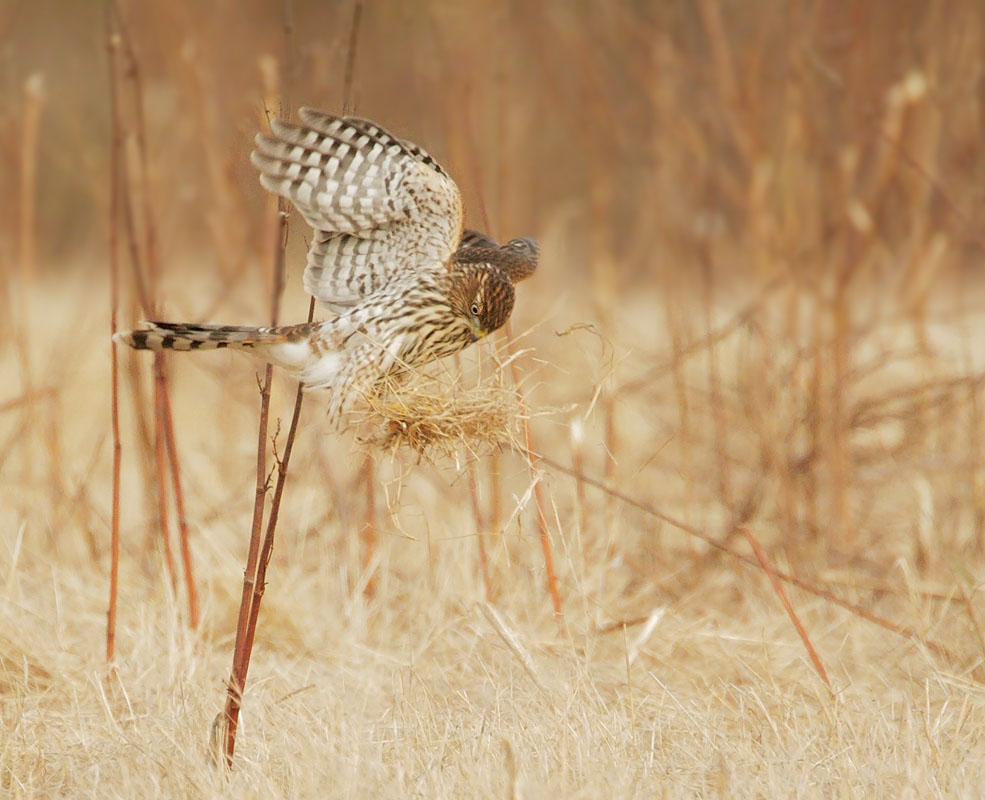
A juvenile, above having just captured a vole and carrying it in a clump of grass; below standing in the grass.
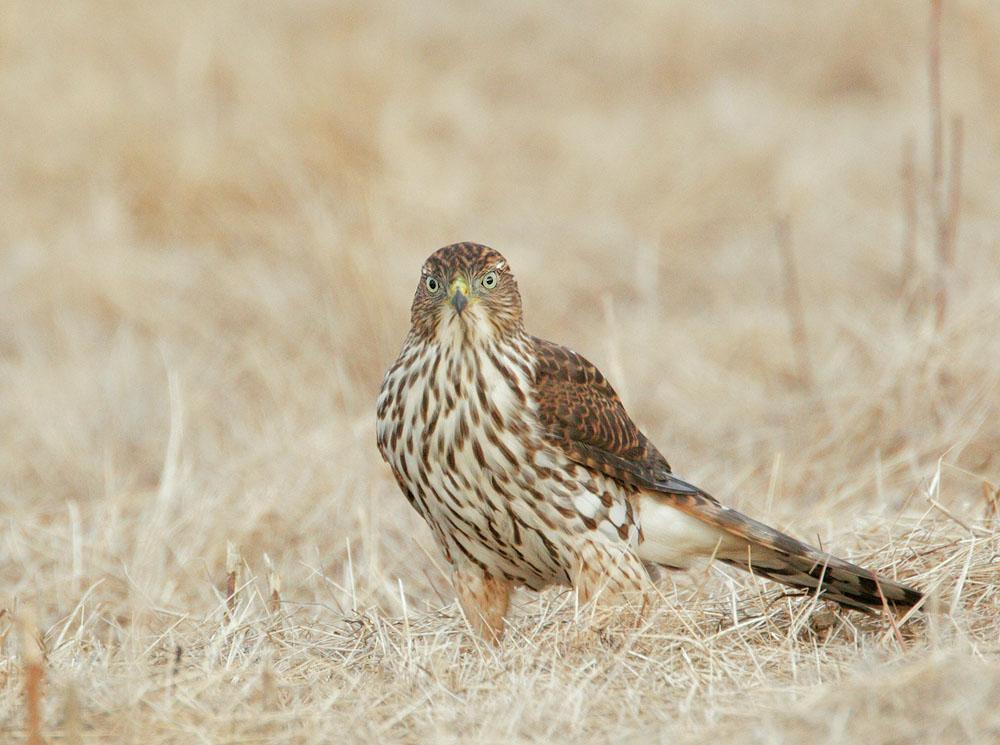
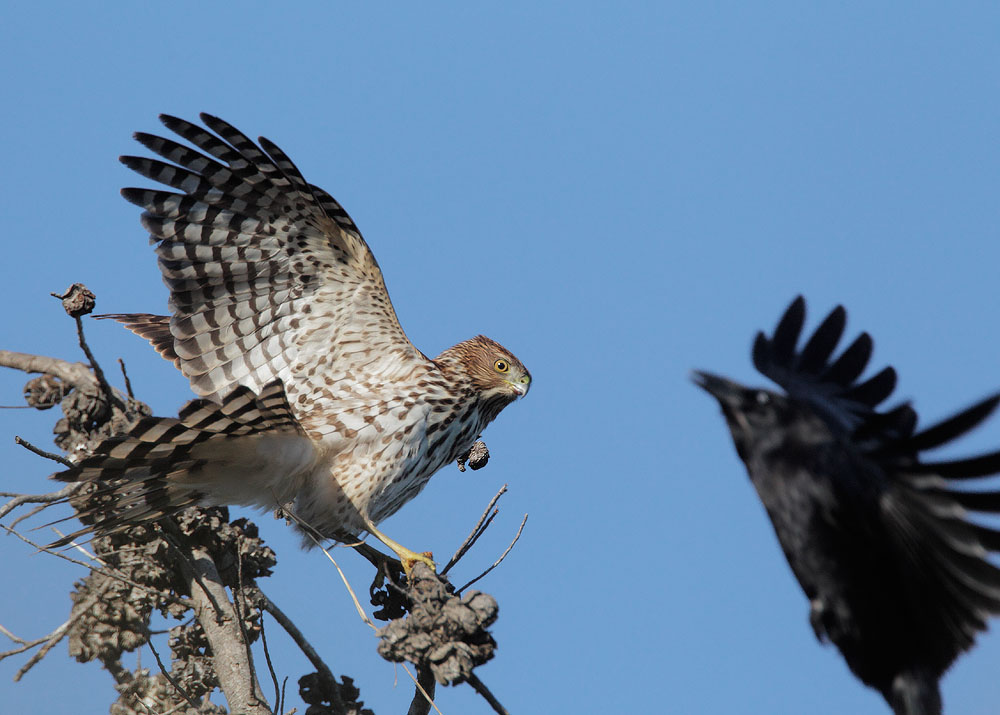
This juvenile Coop was being harassed by several American Crows, including the attacker shown out-of-focus here; shortly after I took this photo, the hawk left the perch.
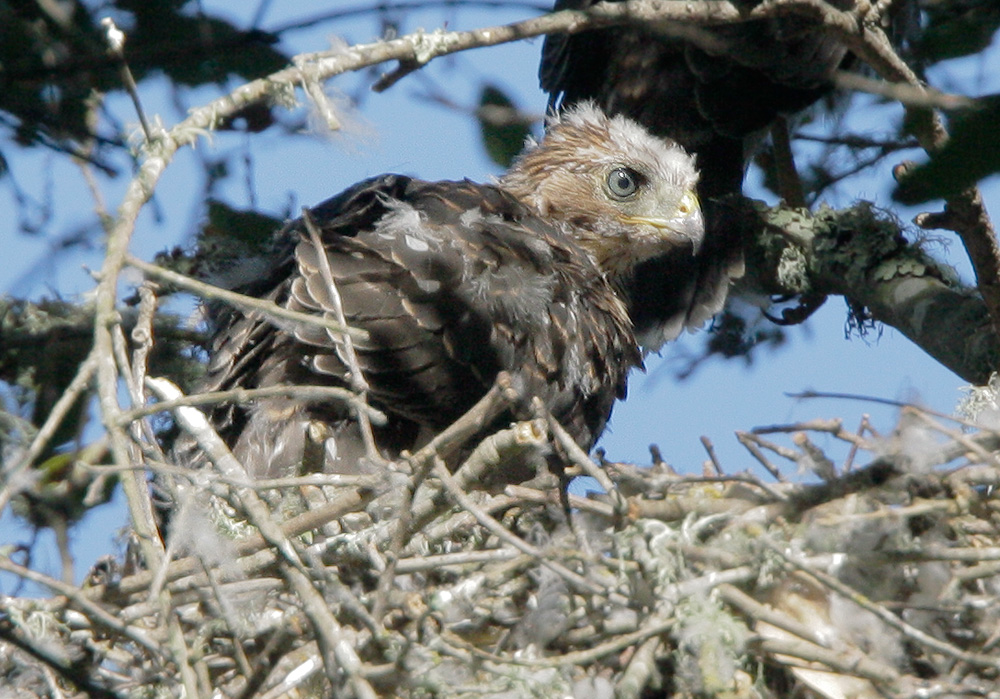
Above, a Coop nestling, nearly fledged but still with some tufts of down, at Arastradero Preserve in June 2007; below, another at virtually the same stage of development but standing out on a branch near the nest, in a residential yard in Cupertino, June 2009.
